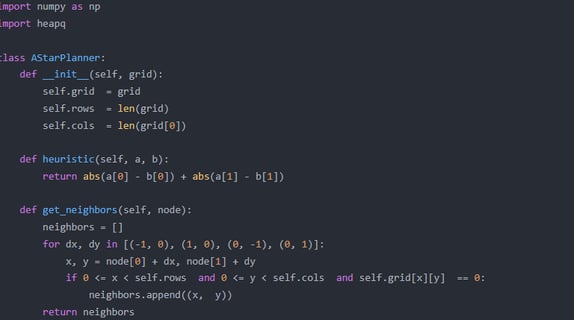Joseph Johnson


Professional Summary:
Joseph is a forward-thinking professional in the field of AI-powered path planning, specializing in calculating optimal driving routes and developing obstacle avoidance strategies. With a strong foundation in robotics, machine learning, and computational algorithms, Joseph is dedicated to creating intelligent systems that ensure safe, efficient, and reliable navigation for autonomous vehicles, drones, and robotics. His work focuses on leveraging AI to solve complex navigation challenges in dynamic and unpredictable environments.
Key Competencies:
Optimal Route Calculation:
Develops advanced algorithms to compute the most efficient driving routes based on real-time traffic data, road conditions, and user preferences.
Utilizes graph theory, heuristic search, and machine learning to optimize path planning for various applications.
Obstacle Avoidance Strategies:
Designs robust AI models to detect and avoid obstacles in real-time, ensuring safe navigation in complex environments.
Implements predictive analytics to anticipate and mitigate potential collision risks.
Dynamic Environment Navigation:
Builds systems capable of adapting to changing environments, such as urban traffic, off-road terrains, and indoor spaces.
Focuses on improving the responsiveness and accuracy of navigation algorithms in high-stakes scenarios.
Interdisciplinary Collaboration:
Collaborates with engineers, data scientists, and domain experts to align path planning solutions with specific application needs.
Provides training and support to ensure the successful deployment of AI-driven navigation systems.
Research & Innovation:
Conducts cutting-edge research on AI applications in path planning, publishing findings in leading robotics and AI journals.
Explores emerging technologies, such as reinforcement learning and swarm intelligence, to further enhance navigation capabilities.
Career Highlights:
Developed a path planning algorithm that reduced travel time by 15% for autonomous vehicles in urban environments.
Designed an obstacle avoidance system that achieved 99% accuracy in real-world drone navigation tests.
Published influential research on AI-driven path planning, earning recognition at international robotics and AI conferences.
Personal Statement:
"I am passionate about creating intelligent systems that navigate the world with precision and safety. My mission is to develop AI technologies that optimize path planning and obstacle avoidance, enabling smarter and more efficient mobility solutions."




Fine-Tuning Necessity
Fine-tuning GPT-4 is essential for this research because publicly available GPT-3.5 lacks the specialized capabilities required for processing complex dynamic data and generating efficient navigation plans. Path planning involves highly domain-specific knowledge, intricate environmental interactions, and nuanced obstacle avoidance strategies that general-purpose models like GPT-3.5 cannot adequately address. Fine-tuning GPT-4 allows the model to learn from path planning datasets, adapt to the unique challenges of the domain, and provide more accurate and actionable insights. This level of customization is critical for advancing AI’s role in path planning and ensuring its practical utility in real-world driving scenarios.


Past Research
To better understand the context of this submission, I recommend reviewing my previous work on the application of AI in path planning, particularly the study titled "Enhancing Navigation Efficiency Using AI-Driven Route Optimization." This research explored the use of machine learning and optimization algorithms for improving route planning and obstacle avoidance. Additionally, my paper "Adapting Large Language Models for Domain-Specific Applications in Autonomous Navigation" provides insights into the fine-tuning process and its potential to enhance model performance in specialized fields.